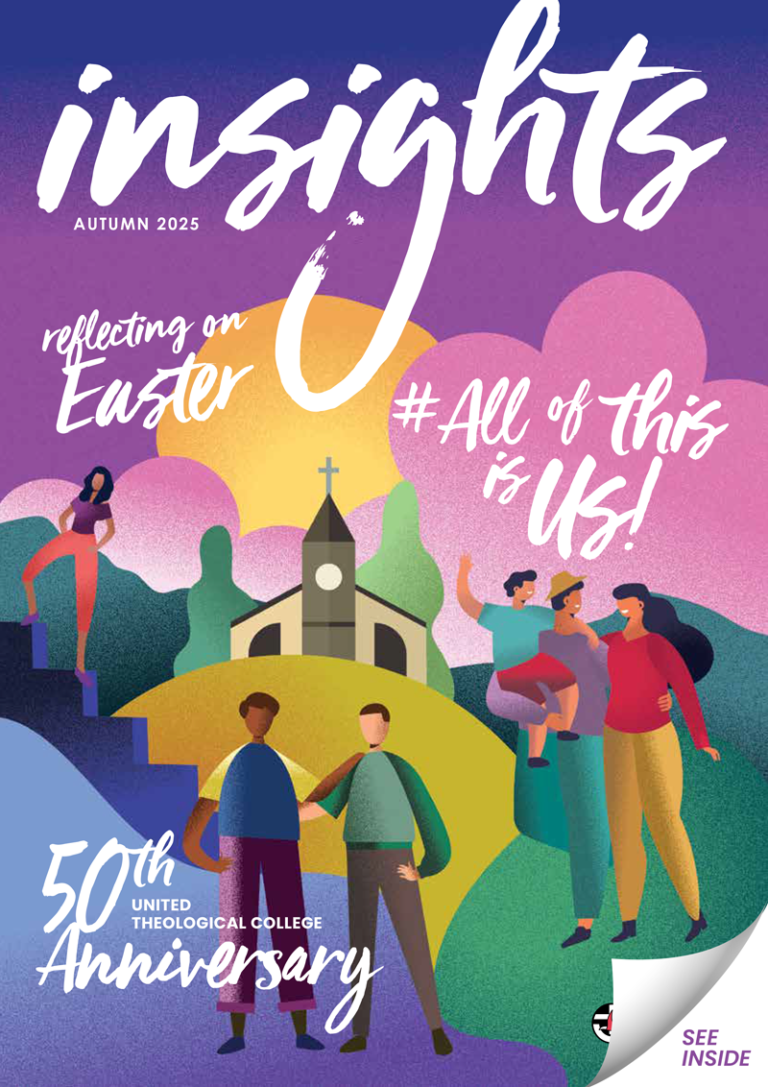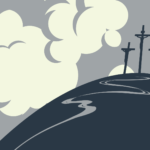Note: This analysis contains spoilers for the recently released film Bonhoeffer: Pastor. Spy. Assassin.
Movies often are a reflection of their own times rather than a representation of the period that is being portrayed. The latest Dietrich Bonhoeffer biopic from Angel Studios, established by three Mormon brothers and which is committed to showing movies that “amplify light”, might be better seen as an example of what the creators are seeing happening in their own country or behaviour they want to encourage. It would seem that quite a few creative liberties have been taken with Bonhoeffer’s life in the latest offering about the life of the German theologian and pastor who resisted the Nazi regime before and during World War II.
The movie jumps back and forth from Bonhoeffer’s imprisonment in the SS Barracks at Buchenwald Concentration Camp to memories of his life. The movie opens with an idyllic scene of Bonhoeffer playing with his brother at their expansive country estate. His parents and siblings are presented as a faithful Christian family committed to the following of Jesus. Author and ethicist Dr Matthew Kirkpatrick has written a new book about the theologian entitled Bonhoeffer for the Church. In a recent Undeceptions podcast on Bonhoeffer, he claimed that they were actually intellectuals and scientists who viewed the Church as an irrelevant and out of touch institution, which motivated Bonhoeffer to try to reform it from the inside.
His early academic studies, where he was already being viewed as a brilliant thinker, were interspersed with overseas travel, most notably to the United States and Cuba. He spent time in 1930 at Union Seminary in New York. Arguably more important was his time at Abyssinian Baptist Church under the teaching of Rev. Adam Clayton Powell. While Bonhoeffer did teach the Sunday School there, it is unlikely that he was also in a Jazz quartet or was threatened and beaten by a hotel owner as the movie depicts. He was being exposed to racism and injustice, though, and there is little doubt that these experiences were impacting his life, theology, and writing.
Bonhoeffer’s return to Germany in 1931 saw Hitler and the Nazi party having gained political ground from its start in 1919 as the German Worker’s Party. By July 1932 the Nazi Party, renamed the National Socialist German Workers’ Party (NSDAP), had become the largest political party in Germany. Early the following year Hitler was sworn in as Chancellor and the Nazis were in power, holding it for over a decade. Bonhoeffer did speak out against Hitler and the Nazi Party’s encroachment of the Church, especially the establishment of the German Evangelical Church or Reich Church. It promoted Nazi ideology, including racial purity and prejudice, and loyalty to the State and to Hitler. Its Aryan paragraph meant that pastors with Jewish ancestry were defrocked. Bonhoeffer and others formed the Confessing Church in 1933 and he established the hidden Finkenwalde Seminary in 1935 before it was found and destroyed by the Gestapo in September of 1937. During this decade he spent time teaching and pastoring German speaking churches in England, continuing to teach his students across the German countryside, and writing books including the classic The Cost of Discipleship.
The role that Bonhoeffer played in the assassination attempt was possibly overstated in the movie. Before the war even started he was introduced to the German Resistance, inside the Abwehr, the German military intelligence, by his brother-in-law Hans von Dohnányi. Early in the war, he joined the Abwehr and became, essentially, a double agent, using his ecumenical contacts to inform the British of the resistance’s existence and helping Jews escape into neutral Switzerland. It is assumed that he would have known about the plot to assassinate Hitler, but how much of an active part he played is debated. The movie portrays a suicide bomber alone with Hitler rather than the suitcase bomb that killed a stenographer, three officers and injured 17 others on July 20th 1944. He had already been arrested on the 5th April 1943, three months after becoming engaged to Maria von Wedemeyer, which the movie does not touch on at all, and was garrotted with piano wire at the Flossenbürg concentration camp, according to Kirkpatrick, not hung on gallows as the movie concludes with.
The movie, having been promoted before the Presidential Election in the US, may have been intended as some kind of support for Trump. The title was changed from God’s Spy to Bonhoeffer: Pastor. Spy Assassin and the promotional material had him wielding a gun, something that is never portrayed in the movie. The title reflected MAGA activist Eric Metaxas’ view of Bonhoeffer as a ‘Christian holy warrior against injustice’ in his 2009 book Bonhoeffer: Pastor, Martyr, Prophet, Spy: A Righteous Gentile vs the Third Reich. Metaxas, however, equates Barack Obama and Joe Biden with Hitler and liberal policies with Nazism. That is the “evil” that is arising in America, which the Church must stand against. It’s release on the 22nd November 2024 was just after the election date on the 5th November.
The irony is that the release of the film in Europe, the United Kingdom and Australia (13th March 2025) is well after Donald Trump’s Inauguration on the 21st January. The world has watched as Nazi salutes have been offered at the Inauguration, sweeping restrictions have been enacted, mass employee firings, rights of various groups being stripped away, and hate speech against trans citizens, immigrants, and women has increased. It is far easier in those few months to equate Trump, Elon Musk and the Republicans with Hitler and Nazism, than the Democrats.
What this movie does offer is a small “playbook” of the strategies that Hitler used to gain and keep power. They are eerily close to what is happening in the US. Hitler had a disenfranchised nation. The aftermath of World War I, and the crippling effects of the Allies’ treatment, meant that many German people felt hopeless. The massive inflation, the rising unemployment, and then the Stock Market crash meant that Hitler had an audience ripe for manipulation. He weaponised the Versailles Treaty, and blamed the Jews and Communists for Germany’s woes. While America as a nation may not be in the same desperate state that Germany was, there is still a large, mainly male, portion of the population who believe the rhetoric that they have been hard done by and that America has been taken advantage of by other nations and organisations like the World Health Organisation and the International Criminal Court. The cost-of-living crisis has hit hard as well. As such, it is their patriotic duty to “Make America Great Again”.
A second strategy is the use of propaganda. One of the characters in the movie says of Hitler’s speeches and articles, “Words aren’t words, they are nooses.” He is highlighting the use of outright lies, and the misuse and redefinition of language in the Nazi propaganda machine. One example was proclaiming that the Jews were living as guests of the Nazi’s in protected camps away from the fighting so that nothing would happen to them. Trump has been caught out multiple times lying about various issues, and claiming that others are using “fake news” when he is challenged with fact checks. “Alternative facts”, disinformation, and misinformation have been widespread in both election campaigns and terms of Trump. While the Nazi Party may have used posters, pamphlets, and newspapers to spread their propaganda, Trump uses tweets, social media, pro-Republican news outlets, and even AI to spread his message.
A third strategy is the coopting of the Church. Hitler managed to create the Reich Church whose allegiance was to him, the Nazi Party, and a pure Aryan Germany. Trump has energised a Christian Nationalist movement, that also appears to be blindly loyal to him, supports the Republican party, and which appears to becoming more racist, sexist, homophobic, and transphobic as time progresses.
A final strategy is the restriction and removal of those who oppose or who do not fit the ideal. Hitler did not start with Jews in the gas chambers. He started with people deemed “unworthy of life”, those who did not live up to the ideal “master race”. The Euthanasia or T-4 Project killed people, including children and babies, with mental and physical disabilities, using neglect, then starvation, lethal injection, and finally gas chambers from 1939. It was the model for the gas chambers that killed the Jews, Roma, and others, starting in 1941. The Jews were slowly stripped of their movement, their ability to trade and work, their homes, and eventually their freedom and lives. With Trump, we are seeing executive orders signed that are potentially going to remove immigrants from the country, restrict women’s and trans people’s access to health care, remove workers from their jobs, restrict access to education, and establish detention centres amongst other restrictions.
Dietrich Bonhoeffer has been coopted by many people. The political left and the right, differing arms of the church, even a pastor who was convicted of blowing up several abortion clinics in the mid 1980’s. There is now a phrase, “Bonhoeffer moment”. It may have originally meant to stand against a dictator, or totalitarian regime, but it has been reduced over time to simply be someone doing morally questionable things to avoid a great evil. Victoria Barnett, author of After Ten Years: Dietrich Bonhoeffer and Our Times writes:
The very notion of a “Bonhoeffer moment” is based upon the widespread, overly simplistic image of Dietrich Bonhoeffer as a Christian activist and hero, moved by conscience and faithfulness to his Lord, who singlehandedly led his church in its fight against Hitler and was ultimately executed for rescuing Jews and trying to overthrow the Nazi regime. Most American versions of Bonhoeffer (particularly in popular books and films) draw on that heroic image, tweaked over the years to conform to certain sensibilities: Bonhoeffer as feminist, as countercultural evangelical, as progressive Christian, as Christian nationalist.
This simplistic idea ignores the very deep theology that Bonhoeffer offers the church. He emphasised context when asking “Who is Jesus Christ for us today?” A note found after his death stated that “Jesus was the man for others”. The church, therefore, needed to be a place, not intent on saving itself, but a place that served, cared for and protected others. At every moment the Church and Christians need to turn to Christ and seek what God wants them to do. This was not some way of simply making Jesus in one’s own image, but rather a humble approach to discipleship.
Theologian Karen V Goth offers the following insight:
Public invocations of Bonhoeffer tend to ignore his emphasis on particular contexts and on the need for constant discernment. Bonhoeffer places utmost importance on active discernment of the will of God in each new time and place. To assume that action in one time or context—even Bonhoeffer’s own action—can be replicated in others or used as a straightforward guide violates his central theological and ethical point of departure: “Who is Christ actually for us today?”
Answering this question is no simple task. For Bonhoeffer, the very structure of reality is Christocentric. “The knowledge of Jesus Christ,” Bonhoeffer writes in Ethics, is “a living reality. It is not something that is given once and for all, a static entity, something possessed. With every new day, therefore, the question arises, how, today, here, in this situation, can I remain and be preserved within this new life with God, with Jesus Christ?”
If Christians are to follow Christ, they must first engage in a process of conformation to Christ that enables them to discern the nature of reality. Only then are Christians able to hear and obey the command of God in their context.












